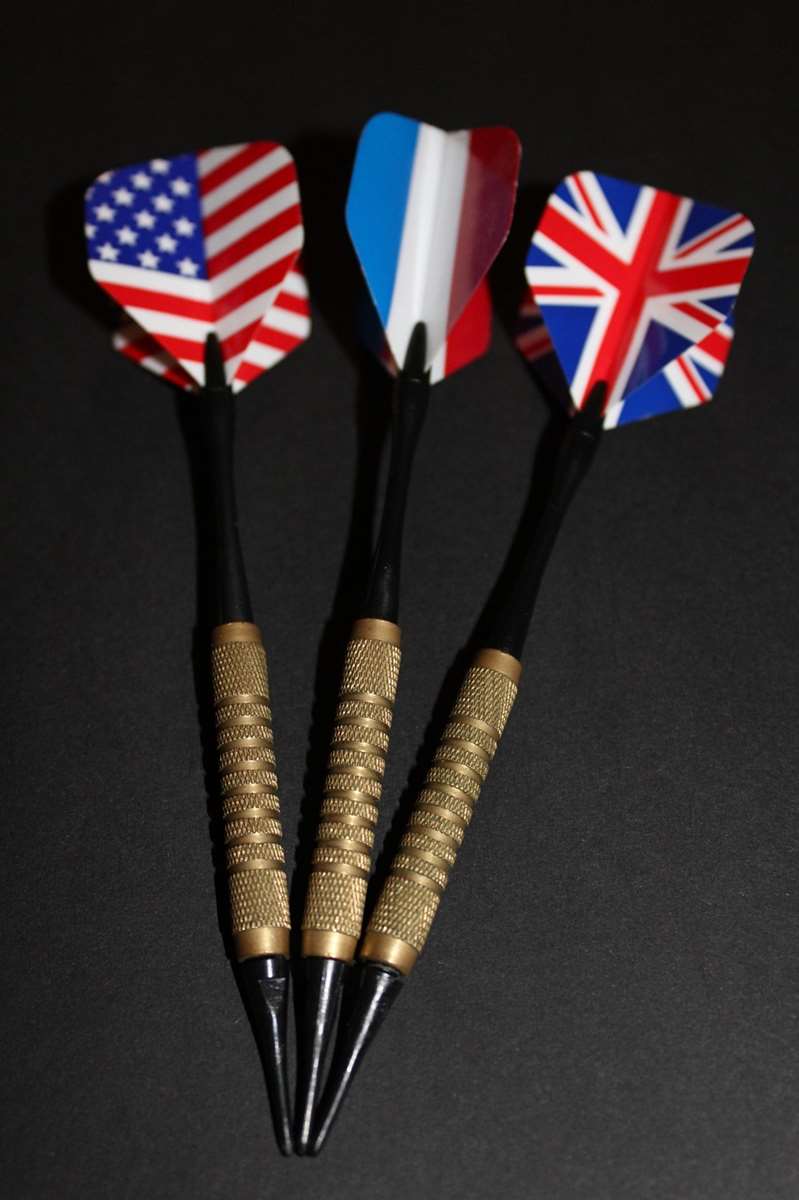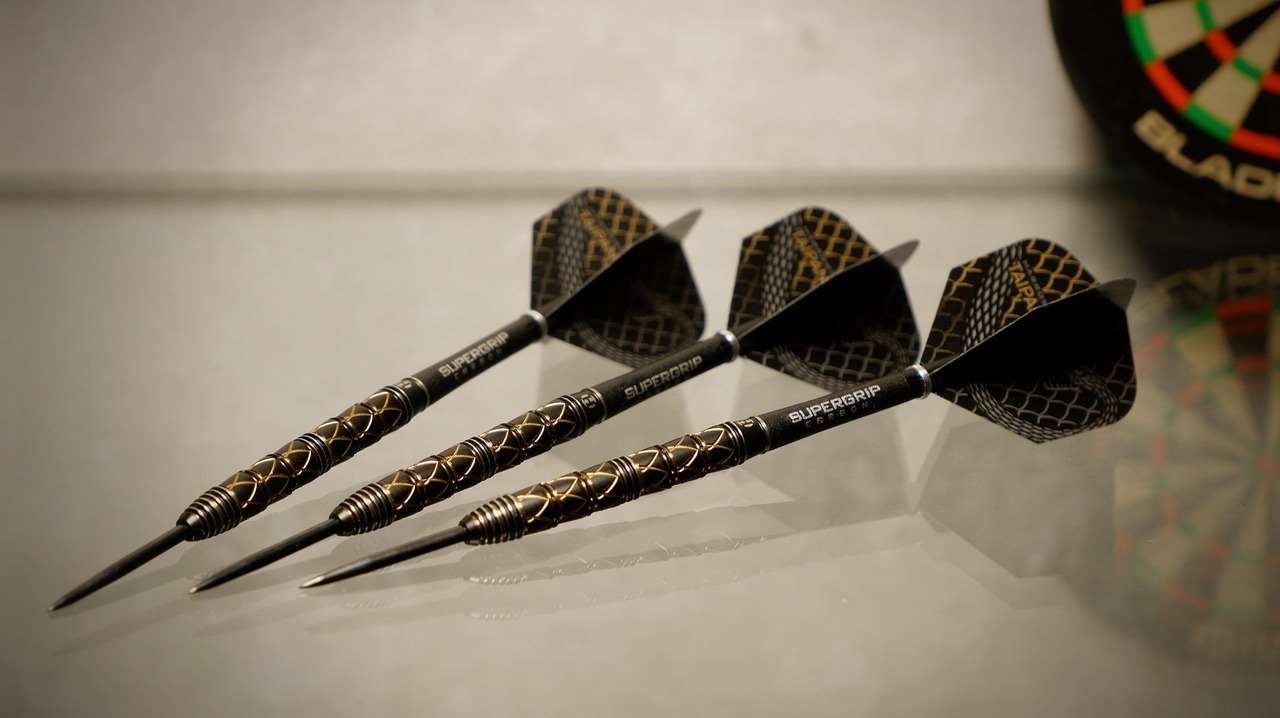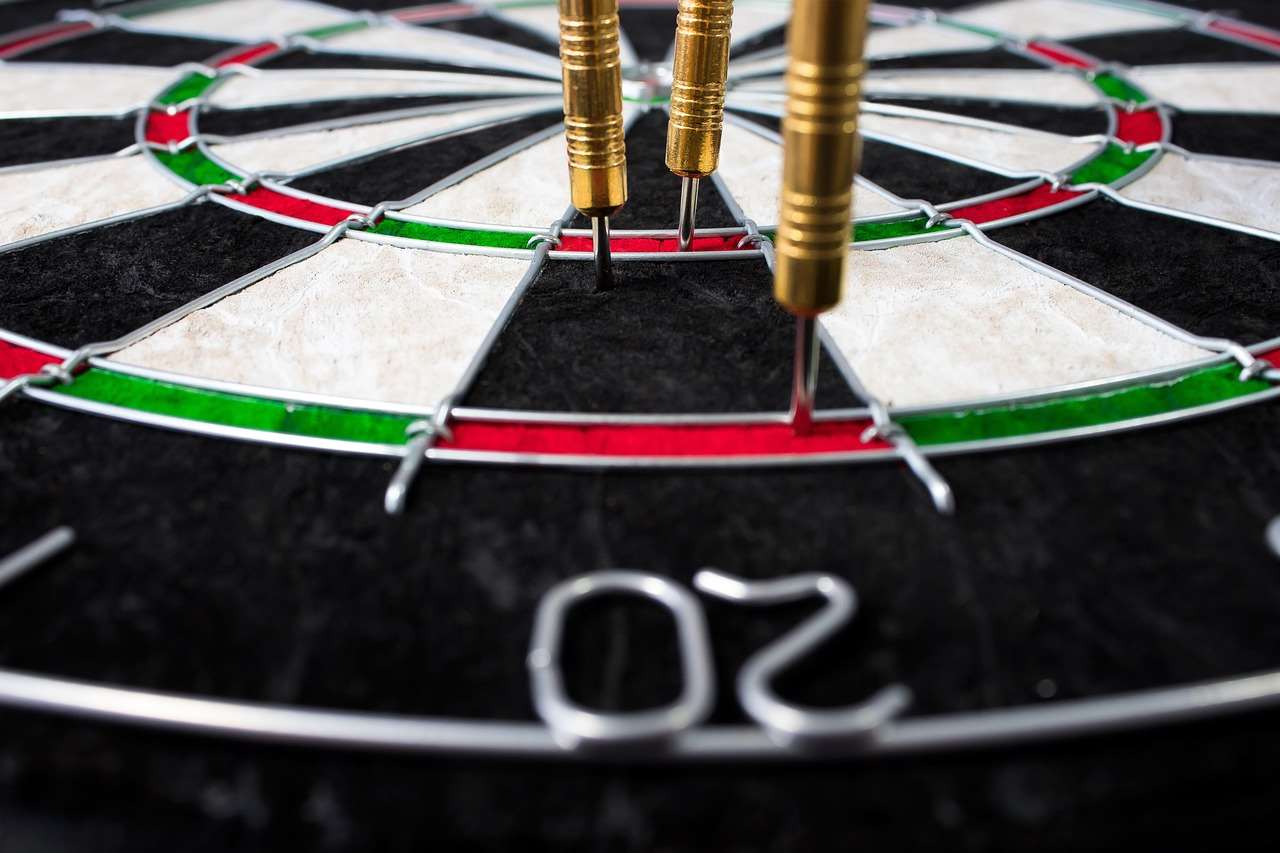Begrip dart balance is crucial for consistent throwing and improved accuracy. Dit artikel biedt Dart Balance Explained Visually, breaking down the concepts of center of gravity, grip, and throw dynamics to help you find the perfect dart for your style. We’ll explore how different barrel shapes and weights affect balance and offer practical tips for assessing and adjusting your dart setup.
⚠️ Still Using Pen & Paper (Of een schoolbord)?! ⚠️
Stap in de toekomst! De Dart Teller -app behandelt alle scoren, stelt kassa voor, en volgt uw statistieken automatisch. It's easier than you think!
Probeer de Smart Dart Teller -app gratis!Klaar voor een upgrade? Klik hierboven!
Dart Balance Explained Visually: Finding Your Center
Dart balance refers to the way weight is distributed throughout the dart’s body. This distribution impacts how the dart flies through the air and how easily you can control it. A well-balanced dart feels natural in your hand and promotes a smoother, more consistent release. Several factors contribute to a dart’s overall balance, including the barrel shape, weight distribution within the barrel, and the length and material of the shaft and flights. Finding the ideal balance is a personal journey, as it depends heavily on your individual throwing style and grip.

De center of gravity (COG) is the most critical aspect of dart balance. This is the point where the dart would perfectly balance on a fulcrum. The closer the COG is to the front of the dart, the more “front-weighted” it is. Omgekeerd, a COG towards the rear creates a “back-weighted” dart. The COG’s location significantly influences the dart’s trajectory and stability in flight. Experimenting with different dart configurations will help you determine your preferred COG location. The location of the center of gravity significantly affects the dart’s flight characteristics. Consider exploring Kies de beste Dart -apparatuur to find the perfect dart with the ideal balance point.
Understanding Barrel Shapes and Weight Distribution
Dart barrels come in various shapes, each affecting the dart balance in a unique way:
- Straight Barrels: These offer a consistent grip and a generally neutral balance. They are often preferred by players who like a predictable and reliable feel.
- Torpedo Barrels: These are thicker in the front and taper towards the rear, creating a more front-weighted dart. Torpedo barrels can be great for players who want more momentum behind their throw.
- Bomb Barrels: These are thickest in the middle, providing a central balance point. They are suitable for players who prefer a balanced feel and consistent release.
- Scalloped Barrels: These have indentations or grooves that offer specific grip points. The position of these scallops can influence the balance and control of the dart.
The distribution of weight within the barrel also plays a crucial role. Some barrels have more weight concentrated at the front, while others distribute it more evenly. Consider Optimal Dartboard Lighting Solutions Guide to ensure your dartboard is perfectly lit to observe the dart’s flight.
Visualizing Grip and Throw Dynamics
The way you grip the dart directly impacts how you perceive and control its balance. A proper grip should feel comfortable and secure, allowing for a smooth and consistent release. This is where the visual element of Dart Balance Explained Visually comes into play – observing how different grips affect the dart’s flight can be incredibly helpful.

Consider these points when assessing your grip:
- Finger Placement: Experiment with different finger positions to find what feels most natural. Some players use two fingers, while others prefer three or even four.
- Pressure: Avoid gripping the dart too tightly, as this can cause tension and affect your release. A relaxed grip allows for better control and accuracy.
- Grip Point: The point on the barrel where you grip the dart can influence its balance and trajectory. Try gripping the dart further forward or further back to see how it affects your throw.
Your throwing motion should complement the dart balance. A smooth, controlled throw will allow the dart to fly straight and true, while a jerky or inconsistent throw can lead to inaccuracies. Visualizing your throw and making small adjustments can significantly improve your consistency.
Analyzing Flight Patterns and Making Adjustments
Observing the flight of your dart is crucial for understanding how balance affects your performance. Does the dart wobble, nosedive, or veer to the side? These are all signs that your dart balance may not be optimal for your throwing style. Ensuring that you have the Best Dartboard Lighting Systems to view the flight of your dart clearly is also vital.
Here are some common flight patterns and their potential causes:
- Wobbling: This could indicate an imbalance in the dart or an inconsistent release. Try adjusting your grip or switching to a different barrel shape.
- Nosediving: This suggests that the dart is too front-weighted. Try moving your grip further back or using lighter flights.
- Veering to the Side: This could be caused by an inconsistent release or a grip that is too tight. Focus on maintaining a smooth and relaxed throwing motion.

Making small adjustments to your dart setup can have a significant impact on its flight characteristics. Experiment with different shaft lengths, flight shapes, and barrel weights to find the combination that works best for you. Keep in mind that there is no one-size-fits-all solution – the ideal dart balance is highly personal.
The Role of Shafts and Flights in Dart Balance
While the barrel is the primary determinant of dart balance, shafts and flights also play a significant role. These components affect the dart’s aerodynamics and stability in flight.

Shafts come in various lengths and materials. Longer shafts tend to make the dart more stable, while shorter shafts can increase its speed. Material also matters; nylon shafts are lightweight and flexible, while aluminum shafts are more durable and rigid.
Flights affect the dart’s lift and drag. Larger flights provide more stability, while smaller flights offer less resistance and can increase speed. Flights also come in various shapes, each with its own unique aerodynamic properties. Standard flights are the most common, providing a good balance of stability and speed. Slim flights offer less resistance and are often preferred by players who want a faster dart. Kite flights are more stable than standard flights and are often used by beginners.
Practical Tips for Assessing and Adjusting Your Dart Setup
Here are some practical tips for assessing and adjusting your dart setup to optimize Dart Balance Explained Visually:
- Start with a Baseline: Begin by using a standard dart setup and gradually make changes one at a time. This will allow you to isolate the effects of each adjustment.
- Record Your Results: Keep track of your scores and flight patterns as you experiment with different setups. This will help you identify what works best for you.
- Seek Feedback: Ask experienced dart players for their opinions on your setup and throwing style. They may be able to offer valuable insights that you haven’t considered.
- Be Patient: Finding the perfect dart balance takes time and experimentation. Don’t get discouraged if you don’t see results immediately.
Advanced Techniques for Optimizing Dart Balance
For serious players, fine-tuning dart balance can involve advanced techniques like using specialized tools to measure the center of gravity, experimenting with different materials for shafts and flights, and even customizing the barrel to achieve the perfect weight distribution. Always check How To Light Your Dartboard before you start, as any change might affect the way you see your dart fly.

Some players even use lead tape or tungsten putty to adjust the weight of their darts. This allows for precise control over the COG and can be useful for fine-tuning the balance to match their individual throwing style.
Understanding the intricacies of dart balance and how it relates to your grip and throwing motion can be a game-changer. By visually analyzing your throw, experimenting with different setups, and seeking feedback from experienced players, you can unlock your full potential and achieve greater consistency and accuracy on the dartboard.
Conclusie: Achieving Perfect Dart Balance
Conclusie, Dart Balance Explained Visually boils down to understanding the relationship between the dart’s center of gravity, your grip, and your throwing motion. Experiment with different barrel shapes, shaft lengths, and flight types to find the combination that feels most natural and produces the most consistent results. Remember that finding the perfect balance is a personal journey, and it may take time and experimentation to discover what works best for you. By taking the time to understand the principles of dart balance and making adjustments to your setup, you can improve your accuracy, consistency, and overall enjoyment of the game. Now that you’ve learned about dart balance, take the time to Kies de beste Dart -apparatuur and start experimenting with your own dart setup to find what works best for you!
Hoi, Ik ben Dieter, En ik heb Dartcounter gemaakt (Dartcounterapp.com). Mijn motivatie was geen darts -expert - helemaal tegenovergestelde! Toen ik voor het eerst begon te spelen, Ik hield van het spel, maar vond het moeilijk en afleidend om nauwkeurige scores te houden en statistieken te volgen.
Ik dacht dat ik niet de enige kon zijn die hiermee worstelde. Dus, Ik besloot om een oplossing te bouwen: een eenvoudig te gebruiken applicatie die iedereen, Ongeacht hun ervaringsniveau, zou kunnen gebruiken om moeiteloos te scoren.
Mijn doel voor Dartcounter was eenvoudig: Laat de app de nummers afhandelen - het scoren, de gemiddelden, de statistieken, Zelfs checkout suggesties - zodat spelers puur kunnen richten op hun worp en genieten van het spel. Het begon als een manier om het probleem van mijn eigen beginners op te lossen, En ik ben heel blij dat het is uitgegroeid tot een nuttig hulpmiddel voor de bredere darts -community.